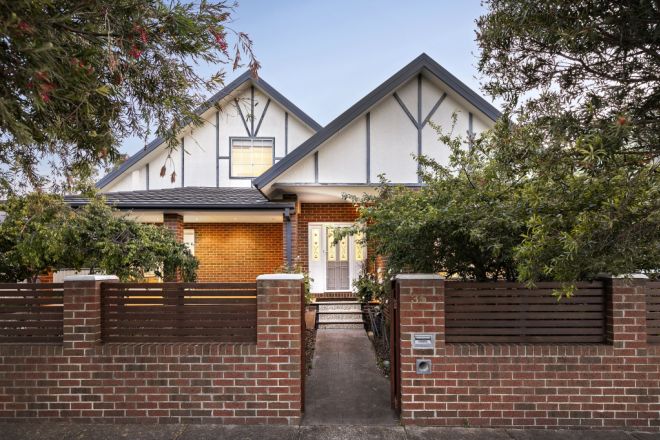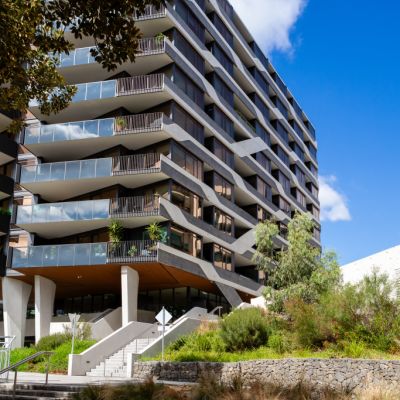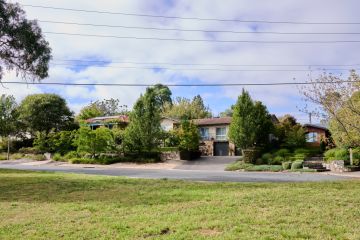How a tax you rarely pay is slowing the property market
Stamp duty is an inefficient tax that makes it harder for first-time buyers to enter the property market and prevents empty nesters from downsizing, economists say.
Experts say it should be reformed to ease affordability and supply issues. However, some critics say removing the tax would have a minimal effect, as the added cost is often added to loans or taken from equity gains when selling another property to move.
Stamp duty rates vary around Australia and are applied progressively based on the price paid. The highest maximum rate is 6.5 per cent in Victoria, unless a buyer qualifies for a first home buyer discount or exemption. It works out to about $20,000 in stamp duty on a $500,000 property in the most expensive state.
Most economists want to see the tax abolished and replaced with an expanded annual land tax, to make up for the shortfall in revenue stamp duty brings in.
CoreLogic head of research Tim Lawless said the tax made it harder for first home buyers to get into the market. “It’s clearly a significant disincentive to transact in the marketplace. It’s a cost that particularly, if you’re a first home buyer, and you’ve just come to the market, it just doesn’t come to mind.
“The fact you have to pay tens of thousands of dollars, purely just to purchase a home … at a time where housing affordability is as stretched as it is, it can be a significant blocker to give first home buyers access to the market.”
First home buyer concessions across the country were only applied on the cheapest properties available, AMP deputy chief economist Diana Mousina said. For example, stamp duty is free for NSW first home buyers up to $800,000. The median house price in Sydney was $1.47 million and the median unit price $860,000.
“It’s pretty restrictive. It’s not reflective of the average median price in Sydney. In some cases, it would only really affect a small portion of the population,” she said.
Centre of Independent Studies chief economist Dr Peter Tulip said it made downsizing less attractive for empty nesters. “The process of selling one property to buy another incurs this very large cost which discourages people from arranging things better,” he said.
“And so we have this serious misallocation of housing in Australia, with lots of owner-occupiers in housing that is much bigger than they need while their kids and grandkids are seriously overcrowded.”
ANU economics and statistics expert Associate Professor Ben Phillips was sceptical removing stamp duty would improve affordability or encourage empty nesters to move.
He said first home buyers were unlikely to buy a median-priced property and could add the cost of stamp duty to their loan to reduce the upfront cost. “It’s not going to be the thing that’s going to make houses affordable for first home buyers in Australia,” he said. “First home buyers are typically not buying a median-priced house. Their typical buy price will be 15 per cent cheaper or even more.”
Phillips said downsizers could pay for stamp duty on a new home by using the capital growth their home accrued in the time they had owned it.
“I think the big deal for retirees is they don’t want to leave their home they’ve lived in. Many of these people own their home outright … you’ve got a lot of equity there. Why would you be worried about paying [tens of thousands] in stamp duty? My hunch is that’s not that much of a big deal, but the truth is we don’t really know.”

Mortgage broker and managing director of Equilibria Finance Anthony Landahl said, anecdotally, he found the cost of stamp duty would turn off both first home buyers and others.
“It does impact what our customers can do,” he said. “One problem we see particularly with first home buyers is the stamp duty thresholds are now below where the market is at in many states.
“That impacts first home buyers who are already struggling with savings and serviceability of their loans.
“We have some clients who will change their strategy because they say it’s not worth the cost of moving, particularly if they’re moving from one house to another where there’s not a massive difference in the price.”
We recommend
States
Capital Cities
Capital Cities - Rentals
Popular Areas
Allhomes
More










